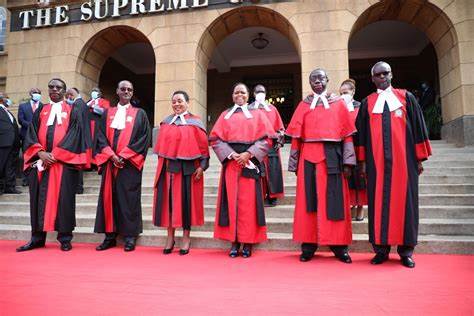The judiciary has published guidelines detailing how media practitioners should report court cases in Kenya.
In the document seen by The Kenya Times, the judiciary explained that the guidelines are in line with the 2010 Constitution which demands that the principle of justice must be seen to be done.
“It is against this background that the media guidelines seek to facilitate journalists in their work and guide court officials based on open justice, independence, sanctity and fairness,” read the document in part.
Moreover, the judiciary has listed three cases which media practitioners will not be allowed to cover.

The report indicates that journalists are prohibited from covering cases held in camera, protected witnesses, and terrorism cases.
According to Cornell Law School ‘in camera’ translates to ‘in chambers’ but carries the meaning ‘in private’.
Further, a portion of cases held in camera are held before a judge where the press and the public are not allowed to take part.
“Media practitioners are not allowed access to court sessions held in camera. For protected witnesses in terrorism cases and other cases, media practitioners may cover with express authority from the court,” said judiciary.
Additionally, the judiciary warned the media to be careful, verify information and avoid publishing libelous material.
“There are special circumstances where the court issues specific orders prohibiting coverage of a particular case. The media should avoid covering such cases,” read the document.
Also Read: Judiciary Revokes Powers of Municipal Courts
Judiciary Guide on Sensitive Cases
In addition, the judiciary gave directives on coverage of cases that relate to personal life, health, or safety of individuals and children or victims of sexual and gender-based violence.
When reporting such cases in the public interest the media should take note of the following:
- Exercise caution to avoid breach of privacy as enshrined in Article 31 of the Constitution.
2. Avoid exposing victims to further harm, putting them at risk or re-traumatization.
3. Always corroborate the accuracy of information from the court records.
Also, the media should seek permission from the child, a person closest to the child/parents/ legal guardian and the court in cases involving minors.
They should also maintain privacy and confidentiality by obscuring or blurring the image of a minor accused of being in conflict with the law, a victim of physical or sexual abuse, or a child diagnosed with an infectious disease.
Also Read: How to Claim Your Cash Bail from Courts in Kenya
“Do not disclose information that may lead the reader/viewer/listener to identify the minor either through their location, parents or siblings, or institutions where they frequent or study. Children shall not be identified whether as victims, witnesses, or defendants,” directed the judiciary.
Moreover, journalists should use code names, pseudo names, or change the names of a minor in all children’s cases.
Journalists must also focus on the issues and not the individual, especially when the case is of public interest.
“No matter how newsworthy a story is, whenever in doubt whether a story will endanger or risk the life or welfare of a child, it is important to either give just the basics of the case or drop the story altogether,” read the document.
Furthermore, the judiciary directed the media to take caution while reporting cases concerning conflict in or issues within a family setup including succession, divorce, matrimonial property, and guardianship.
Also, journalists should always obscure or blur an image of a Sexual and Gender-Based Violence cases (SGBV) victim.
They should not expose the victims to further harm, put them at risk or re-traumatization










































































